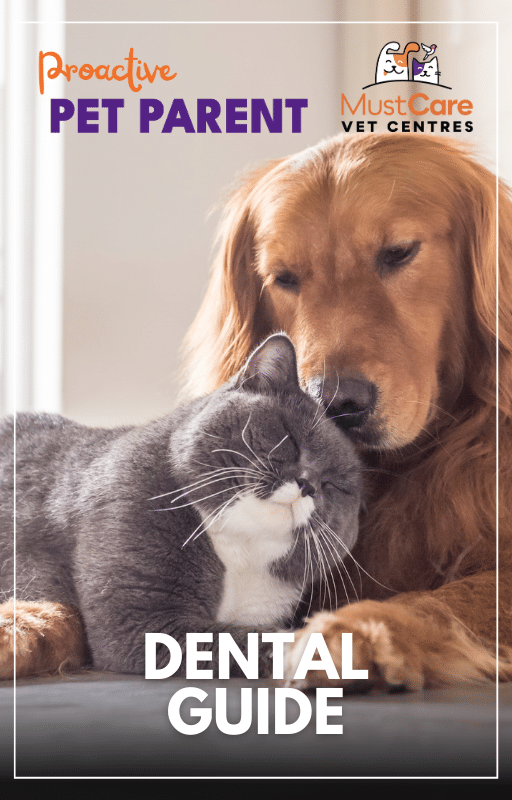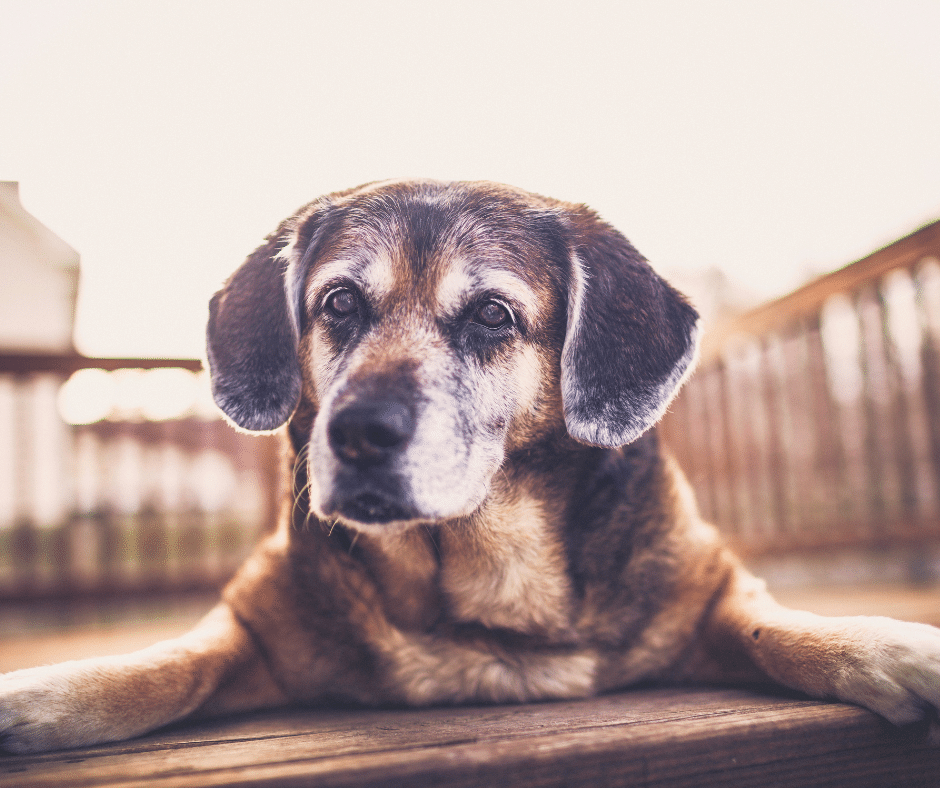Share This Blog With Other Pet Parents!
Senior Pet Comfort: Affordable Elderly Pet Care Tips
As our pets enter their golden years, the comforts of home become more important than ever. In this article, we’ll explore practical, cost-effective strategies to ensure your ageing furry friends enjoy comfort and safety at home. From easy home modifications to budget-friendly health tips, we aim to guide you through enhancing your pet’s quality of life without breaking the bank.
What you’ll learn from this blog:

For all you need to know, download our
FREE Dental Guide
This blog is part of our Proactive Pet Parent series! This is just the beginning… To see more blogs, click here! Better yet, sign-up to our newsletter to receive these directly to your inbox each month.
Sign-up To The Proactive Pet Parent Newsletter
Understanding Elderly Pet Needs
Recognising the signs of ageing in pets is crucial for adapting their living environment to their changing needs. As pets grow older, they often experience a decrease in mobility. This can manifest as a reluctance to climb stairs, jump onto higher surfaces, or engage in the playful activities they once enjoyed. Accommodating these physical changes is essential in maintaining their quality of life. Another common sign is a shift in dietary habits. Older pets may have different nutritional needs due to a slower metabolism or health issues like diabetes or kidney problems. It’s important to consult with a vet to tailor their diet accordingly.
Sensory impairments, such as diminished hearing or vision loss, are also prevalent in ageing pets. These changes can be disorienting and stressful for them. Creating a consistent and safe environment helps reduce their anxiety. For instance, keeping their bed, food, and water in the same accessible location can provide a sense of security.
Additionally, elderly pets may require more frequent veterinary check-ups to monitor their health. This proactive approach helps in early detection and management of potential health issues. It’s about understanding and responding to these subtle shifts in their behaviour and physical state, ensuring we modify our homes and routines to align with their evolving needs.
Home Modifications for Comfort
Adapting your home to suit the needs of your ageing pet doesn’t have to be costly or complicated. Simple modifications can greatly enhance their comfort and safety. Starting with flooring, non-slip mats or rugs can be a game-changer, especially in areas where your pet spends most of their time. These mats prevent slips and falls, particularly on hardwood or tiled floors, and provide much-needed traction for older pets with mobility issues.
Comfortable bedding is another key aspect. Orthopaedic pet beds are designed to support joints and relieve pressure points, making them ideal for pets with arthritis or other age-related discomforts. Placing these beds in easily accessible, quiet corners of the house gives your pet a secure and comfortable spot to rest.
For feeding and hydration, consider raised food and water bowls. These are particularly beneficial for pets with neck or back problems, as they reduce the strain of bending down. The bowls should be stable and at a height that suits your pet’s size. Additionally, ensure that these essential items are placed in a consistent location to accommodate pets with vision or memory issues.
Lastly, consider installing pet ramps or stairs to help your pet access their favourite spots, like the couch or bed, without straining their joints. These small changes in your home not only improve the quality of life for your elderly pet but also demonstrate your commitment to their well-being as they age.
By thoughtfully modifying your home, you create a nurturing environment that caters to the physical and emotional needs of your senior pet.
Affordable Health Care Strategies
Maintaining the health of your elderly pet doesn’t necessarily require expensive interventions. There are several cost-effective strategies to ensure they stay healthy and happy. Preventive care is key; regular vet check-ups can catch potential health issues early, often reducing the cost and complexity of treatment down the line. These check-ups don’t have to strain your wallet. Many veterinary clinics offer wellness plans or packages that provide these services at a discounted rate.
Incorporating budget-friendly supplements into your pet’s diet can also play a significant role in maintaining their health. Supplements like glucosamine for joint health or omega fatty acids for cognitive function can be quite beneficial. However, it’s crucial to consult with your vet before adding any supplements to your pet’s regimen to ensure they’re necessary and appropriate for your pet’s specific needs.
Another aspect of affordable health care is staying informed. Educate yourself about common health issues in elderly pets and their symptoms. Knowledge is power and can save you from unnecessary expenses caused by panic-driven decisions. Online resources, books, and advice from your vet can be invaluable in this regard.
Lastly, consider pet insurance as an option. While it’s an additional expense, it can save you money in the long term, especially if your pet develops a chronic condition or requires extensive care. Pet insurance plans vary, so it’s important to choose one that fits your budget and your pet’s specific needs.
By being proactive and informed, you can manage your elderly pet’s health care in a way that’s both effective and economical. It’s about making smart choices that prioritise their well-being while also respecting your financial limitations.
Diet and Exercise for Senior Pets
The right diet and exercise regime are crucial for the wellbeing of senior pets, and they don’t have to be costly. As pets age, their nutritional needs change. They may require fewer calories, but still need a diet rich in essential nutrients. Look for pet foods specifically formulated for seniors, which typically contain the right balance of nutrients for older pets. These foods can be more digestible and supportive of their ageing bodies. It’s also worth considering generic or store brands, which often offer similar nutritional profiles at a more affordable price.
Gentle exercise is equally important for maintaining your senior pet’s health. While they may not have the same energy levels as in their youth, staying active helps keep their joints flexible and muscles toned. Tailor exercise to your pet’s ability; short, leisurely walks can be just as beneficial as longer, more strenuous ones. Indoor play, like gentle tug-of-war or hide-and-seek with treats, can also keep them engaged and moving without overexertion.
The goal is to maintain their health without undue stress on their bodies. Consulting with a vet can provide guidance on the best diet and exercise plan for your pet’s specific needs and health status. This approach ensures your senior pet stays active and healthy, boosting their quality of life while keeping costs manageable.
By balancing nutritional needs with appropriate exercise, you are not only catering to their physical health but also enriching their daily lives.
Mental Health and Socialisation
The mental health and socialisation of elderly pets are aspects that often receive less attention but are equally vital. As pets age, their ability to interact with others and their environment may diminish, but their need for mental stimulation and social interaction remains. Engaging your pet in simple, yet stimulating activities can significantly contribute to their mental well-being. For example, scent games, where you hide treats around the house for your pet to find, can be a fun and low-cost way to keep their mind active.
Social interaction is also key to maintaining your senior pet’s mental health. While they might not have the stamina for long playdates, short visits with familiar pets or people can provide much-needed social stimulation. If your pet is comfortable with other animals, consider arranging low-energy playdates. For those who prefer human company, spending quiet time together can be just as rewarding.
In addition, there are many DIY toy options that can be made from household items. These toys can provide mental stimulation and keep your pet engaged. The goal is to keep their minds active without overstimulating them.
It’s important to observe your pet’s responses and adjust activities to suit their individual needs and preferences. Tailoring these experiences to your pet ensures they continue to enjoy social and mental stimulation in a way that suits their changing lifestyle. By fostering an environment that caters to both their physical and mental health, you are supporting a holistic approach to their well-being in their senior years.
Caring for an elderly pet involves a blend of love, understanding, and practical adjustments. By embracing the strategies we’ve discussed, from home modifications to nutritional tweaks and mental stimulation, you can significantly enhance your pet’s comfort and quality of life in their senior years. The small changes you make have a big impact on their well-being. Implementing these cost-effective and compassionate care practices demonstrates your dedication to your pet’s happiness and health.

